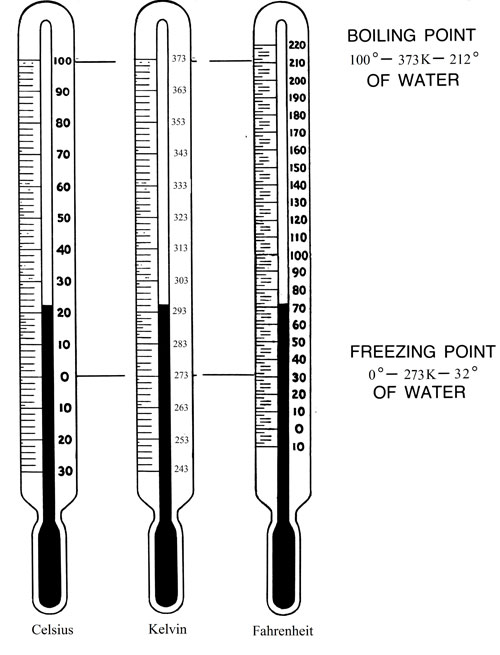
Temperature is another concept to consider when thinking about potential and kinetic energy of atoms and molecules. When measuring the thermal energy of a substance, it would be too difficult to measure and add up the kinetic energy of all the atoms. Instead, measure the average kinetic energy of all the atoms of a substance. This gives you the temperature.
There are many different temperature scales, but the three most common are Fahrenheit, Celsius, and Kelvin.

Fahrenheit is what most people in the United States use when they look at the weather or set their thermostat for their home or office. In the Fahrenheit scale, water freezes at 32° and boils at 212°. Zero degrees was defined as the coldest temperature that could be reached in a lab with a mixture of ice, water, and salt, and 100° was defined as normal body temperature. Unfortunately, it was later discovered that Gabriel Fahrenheit had a higher-than-average metabolism, and so the actual normal body temperature is the slightly less convenient number 98.6°.
Celsius is the metric unit for temperature. It is used by most other countries in the world for weather reports and in everyday use. In the Celsius scale, water freezes at 0° and boils at 100°. This would put normal body temperature at 37°.
Kelvin is simply the Celsius scale shifted so that 0 is redefined as the theoretical lowest possible temperature (called absolute 0). Absolute 0 is -237° C (or about -459.4° F). While both Celsius and Fahrenheit use the degree symbol (°), Kelvin does not.
Source of image used for this section: